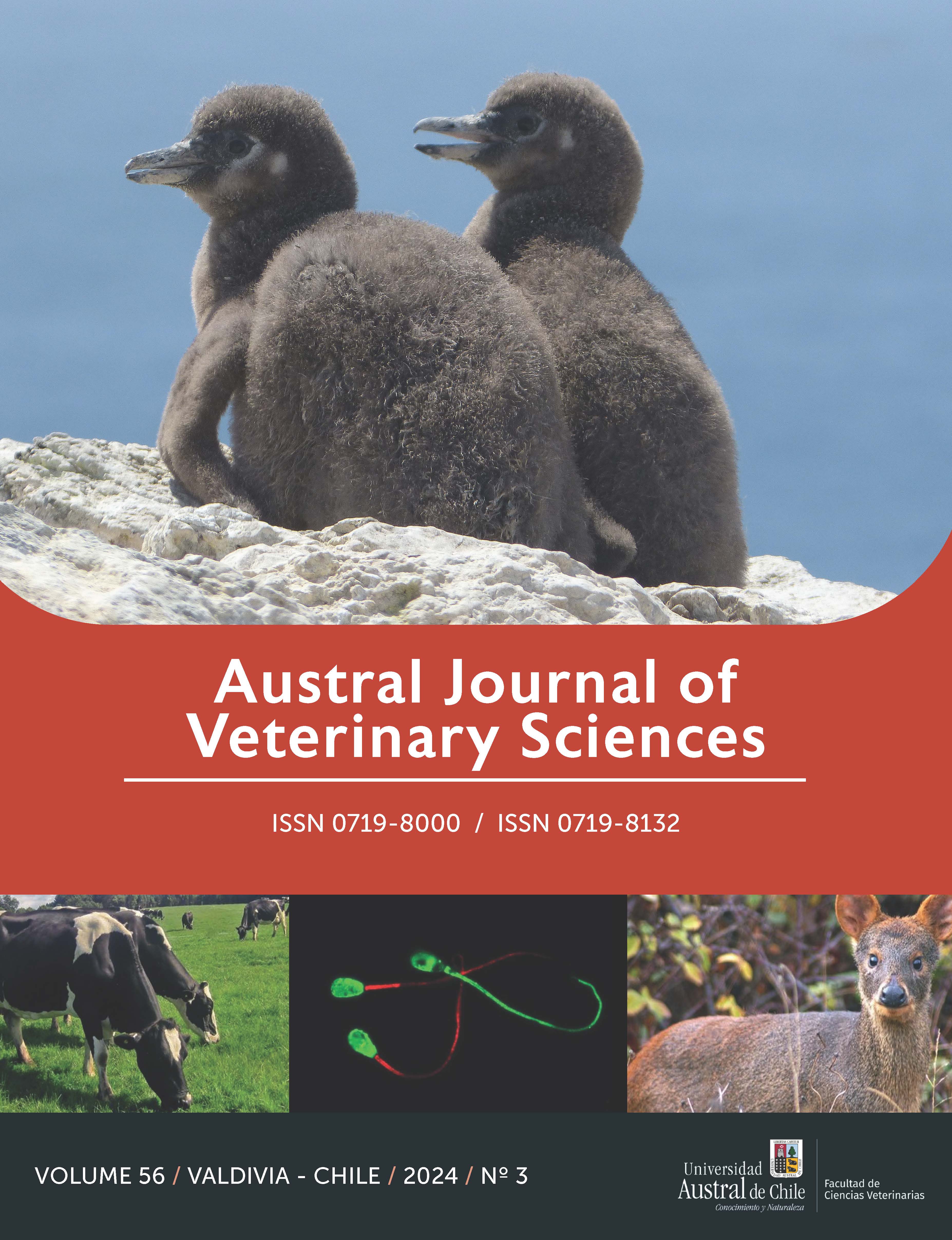Serological evidence of Coxiella burnetii in sheep herds from Lonquimay valley in the Chilean Andes
Conteúdo do artigo principal
Resumo
Coxiella burnetii is the causative agent of Q Fever, a worldwide zoonotic disease that causes acute flu-like illness and chronic manifestations in humans in the form of endocarditis, hepatitis, and other symptoms. Domestic ruminants are the most important reservoirs of the bacteria, transmitting infections to humans during the calving/lambing season through direct contact with contaminated fetal tissues or inhalation of dust particles. The aim of this study was to provide serological evidence and estimate the individual true seroprevalence of C. burnetii exposure in sheep herds in Lonquimay, and to characterize farmers’ knowledge of coxiellosis. A disease freedom survey was conducted in 30 sheep herds selected from the Indigenous Territorial Development Program database (PDTI). A total of 260 blood samples were tested using ELISA for C. burnetii antibody detection. Disease freedom and true animal-level prevalence were estimated, and a questionnaire was administered during farm visits to characterize farmers’ zoonotic knowledge. A positive result was found in 3% (1) of the sampled herds, and the true animal prevalence (mTALP) was higher than previous unpublished estimations (mTALP 4.2%, 95% PPI 1.6%–9%). The estimated probability of the study sheep population not being free of C. burnetii was 34%. A lack of knowledge regarding C. burnetii or the consequences of Q Fever was detected, along with risky behaviors that could facilitate pathogen transmission. This study revealed evidence of exposure to C. burnetii, with low individual and herd-level prevalence. Initiatives to improve zoonotic knowledge among farmers need to be implemented in the short term.


 https://orcid.org/0000-0003-1848-8203
https://orcid.org/0000-0003-1848-8203